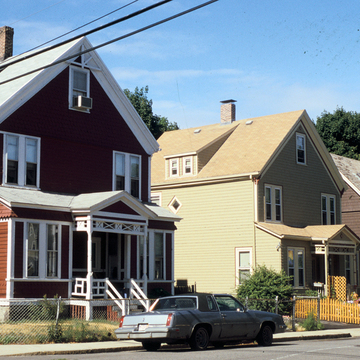The Mill Street/Clam Point neighborhood contains an outstanding concentration of early-nineteenth-century residential architecture from the period before Boston annexed the town of Dorchester. The development of the area began with the fishing industry on nearby Commercial Point, an area that has since been redeveloped with the Southeast Expressway. Two remarkable examples of Federal period architecture survive in the residential neighborhood west of the highway, 32 Mill Street and 19 Ashland Street, both constructed of brick, probably in the 1820s. The house at 32 Mill Street includes Italianate alterations made by Dorchester architect Luther Briggs Jr. around 1860. An important example of the Greek Revival style is the house at 21 Mill Street built for Elisha T. Loring in around 1845–1848. In the center of the three-bay facade are wide pilasters with great paired brackets and a shallow pediment. This trabeated motif frames an Ionic entrance portico with a cast-iron balcony for a second-floor doorway.
Major development of the area came with the Old Colony Railroad, completed between Plymouth and Boston in 1844. Luther Briggs Jr. surveyed portions of the neighborhood for building lots and designed an Italianate villa at 23 Park Street for Charles Jenkins in 1855.


